Click HERE for Part One.
Part 2: Seeming Contradictions That Work So

By David C Forman, president Sage Learning, Author: Fearless HR
Ready for more?
To start, one more Yogi Berra ism: “The future ain’t what it used to be.” Now, that is really true. Here are six statements where truth emerges from seeming contradictions.
- It takes longer to prepare for a shorter presentation. Yes. it does. It takes time to make thoughtful choices, and know what not to say. I like to tell the story of Mark Twain who was asked to come speak at a community function. His first question was how long is my talk….because if you want me to speak for an hour I can come tomorrow. If its 30 minutes, I’ll be ready next week. If its ten minutes, it will be a month.
- Less is more. Technically less isn’t more, but in the workplace, it usually is. When Steve Jobs returned to Apple, he asked his leadership team to identify new initiatives that could make a huge impact. The list quickly became extensive; and then he said: ok, pick three because this is all we can do well. Another data point is the capacity of short term memory, which ranges from 4 to 7 new pieces of information….anything else doesn’t register. Long lists of bullet points or complex slides are simply wastes of time.
- Failures can lead to more successes. Some failures are just that: crummy execution and results. But other failures can be stepping stones to excellence. Great companies understand that failures, especially when pushing the envelope and creating new products and processes, lead to success. Innovation involves risk; and without risk, there are no breakthroughs. Failure is seen, not as a personal shortcoming, but a learning and growth opportunity. If innovation is valued at your organization, failures should be celebrated and recognized, not punished or ignored.
- I can influence others best by saying….nothing. Conventional thinking argues that if presenters are compelling enough, then people will be persuaded to do what we want them to do. But this conventional thinking is wrong. The key is actually asking the right questions to engage people and get them to experience things themselves. Personal experiences are the best teacher and motivator, not what someone else says you should do. Plus, by asking good questions and demonstrating real interest in the other person, trust is extended; and it is virtually impossible to influence people without establishing the foundation of trust.
- Aesop’s Fable: Is it the tortoise or the hare? It depends. For children, the lesson that slow and steady (the tortoise) wins the day makes perfect sense. Perseverance, follow-through and “stick-to-it ness” are wonderful traits in business and life. But when we look at the fable differently, the hare has advantages. In business, slow and steady may not be the best model, although there continues to be debate about being a pioneer or settler. The hare is also a metaphor for how we function best as human beings. People work most effectively in bursts punctuated by periods of renewal or rest. It is like interval training for swimmers, track athletes (or rabbits): periods of intense activity (usually 90 minute of deep work) followed by recovery. Or it is like an intense, months-long business project followed by a sabbatical or time to recharge and renew. As people, there is a cycle and rhythm to our physical and mental exertion, and we need to recognize that these are renewal resources that must be replenished, or they will be lost.
- Failure to prepare is preparing to fail. John Wooden. The greatest of all American college basketball coaches did very little coaching during games. He never called the first time out. He rolled up the game’s program in his hand, took his seat on the bench, nodded to his wife Nell; and unleashed his players. It was all about working harder in practice and being better prepared for the moment. His practice sessions were renowned for their intensity, physical demands, and were synchronized down to the second. This was “deep practice” before it was ever called that.
Oh, one more thing about how we are not in as much control as we think. Dan Pink, in his book “When” (2018), talks about body rhythms and internal clocks—and not the conscious decisions that we make—that can unwittingly impact performance. We all experience a trough roughly seven hours after waking; and the consequences can be mildly annoying, if not damaging. The evidence is quite clear: anesthesiologists make four times greater errors at 4 pm than 9 am; doctors are more likely to prescribe unnecessary medications in the afternoon than the morning; and traffic accidents peak in the afternoon. Evidently, the most unproductive part of the day is at 2:55 pm.
But in true Dan Pink fashion, he doesn’t leave us down in the trough. There are intentional actions that can overcome the effects of the trough—lack of alertness and vigilance. The remedies are breaks that allow us to restore and refresh. One of the seemingly counterintuitive findings about high performers is that they are really good….at taking vigilance breaks. And Pink defines a whole range from micro breaks, school recesses, lunch away from your desk, walking outside with others, and even the Churchillian nap.
So, we don’t have it all figured out. We are wired in ways that we can’t always control or even understand. And while this may be frustrating to some because it does demonstrate the limits of rationality and logic; it is also part of the wonder of being human, the search for meaning and trying to get better every single day. Wisdom comes in many shapes and from many different sources. We just have to be open to receiving it.
…
Meet the author at the upcoming Talent@Work Forum
Written by: Dave Forman
Employee Engagement Employee Experience Leadership Recruitment Strategy & Transformation Teamwork
Previous post

- 1893
labelArticles today2022.02.15.
How AI makes HR a winner
WHY SHOULD YOU CARE? Technology and Artificial Intelligence (AI) have brought in mixed reactions concerning job security and HR as a profession has not been spared. A recent report by [...]
Similar posts

labelArticles today2024.07.24.
AI-Powered HR: Strategic Benefits and Practical Applications

labelArticles today2024.06.24.









Post comments (0)